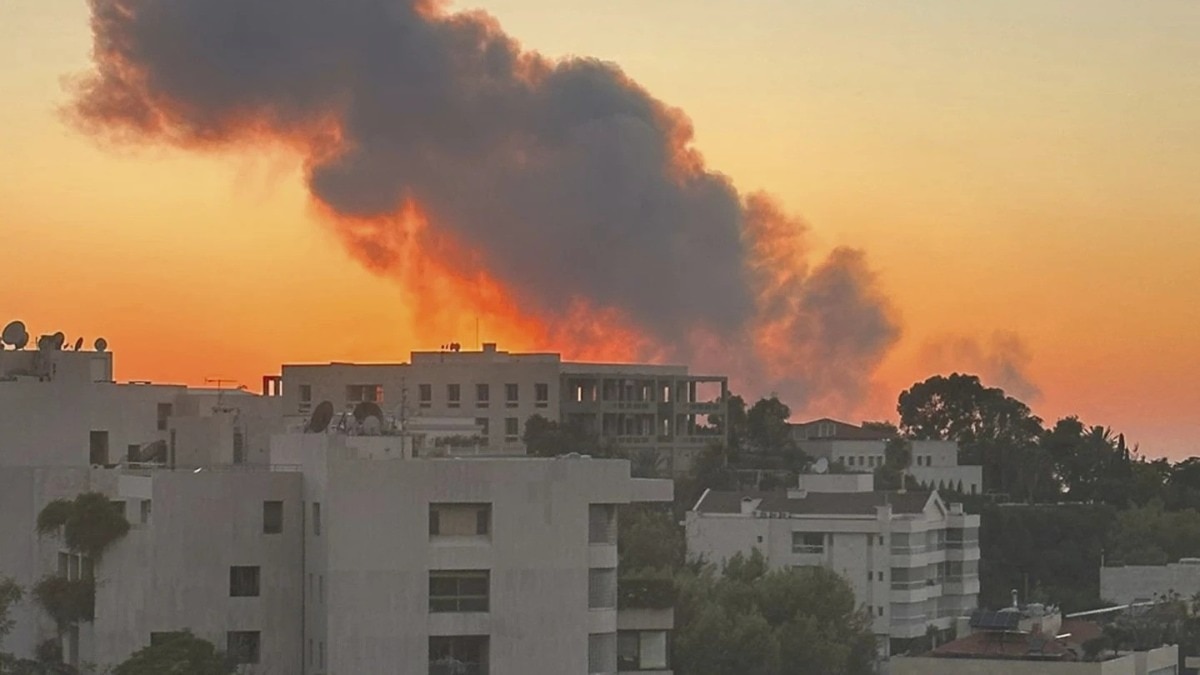2024-09-27 23:34:47
Massive clouds of smoke were seen rising from the Lebanese capital of Beirut as Israel carried out deadly airstrikes on Friday. The attack, Israel said, targeted the central headquarters of the Iran-backed Hezbollah group.
Israeli airstrikes hit Beirut’s southern suburbs, with the Israeli military confirming that multiple buildings were struck in Dahiyeh, a densely populated area known as a stronghold for Hezbollah. Four buildings were reportedly destroyed in the strikes, which rocked the city with powerful blasts, leaving several large craters and damaging surrounding structures.
Search and rescue operations continued through the night, with Lebanon’s health ministry reporting at least nine people dead and over 90 wounded in the aftermath.
The strikes were aimed at senior Hezbollah commanders. There are unverified reports that the militant group’s leader, Sayyed Hassan Nasrallah, was at the headquarters when the attack happened. However, it remains uncertain if the attack managed to kill Sayyed Hassan Nasrallah.
But, Friday’s airstrikes, which come amid efforts by the US and France to broker a ceasefire between Israel and Hezbollah, marks an escalation in the hostilities which broke out nearly a year ago. It also comes against the backdrop of Israel upping its offensive against Hezbollah this month, including targeted killing of the militants via exploding modified pagers and walkie-talkies.
Moments before buildings were flattened in Beirut, Israeli Prime Minister Benjamin Netanyahu was addressing the United Nations General Assembly. Enough is enough, Netanyahu said emphatically, adding that Israel had been “tolerating this intolerable situation for nearly a year”.
“As long as Hezbollah chooses the path of war, Israel has no choice, and Israel has every right to remove this threat and return our citizens to their homes safely,” Netanyahu said.
Not long after that, multiple blasts rocked Beirut.
ROOT OF CONFLICT
The ongoing conflict between Hezbollah and Israel has its roots in long-standing geopolitical and territorial tensions, which have only intensified over the past year since Israel launched extensive military operations in Gaza.
The latest bout of violence, sparked by Israeli airstrikes across Lebanon, has resulted in the deaths of over 500 people, including women and children. Hezbollah has retaliated with rocket fire, targeting Israeli airbases. These skirmishes have been almost constant since October 2023, as Hezbollah declared solidarity with Palestinians in Gaza, responding to Israel’s military operations.
Hezbollah has made it clear that its ongoing attacks are conditional on Israel’s actions in Gaza. Israel, for its part, has ramped up its military operations along the Lebanon-Israel border, launching thousands of attacks, far outnumbering Hezbollah’s retaliation.
WEEKS OF ESCALATION
The ongoing cross-border hostilities between Hezbollah and Israeli forces escalated earlier this month. In a deadly covert operation, thousands of pagers and walkie-talkies were detonated in two days, leaving at least 37 people dead and injuring around 3,000 across Lebanon.
A Hezbollah official called the detonation of the pagers the “biggest security breach” the group had suffered. While the Lebanese government and Iran-backed Hezbollah blamed Israel for the explosions, the Israeli military declined to comment on the deadly attack.
Amid fears of a wider regional conflict, the US and France tried to broker a 21-day temporary ceasefire between Israel and Hezbollah. However, the hopes of a ceasefire looked to be fading after the airstrikes on Beirut on Friday.
While the attacks in Lebanon has so far been confined to aerial attacks, Israel’s military on Friday also deployed additional tanks and armoured vehicles along its northern border with Lebanon, signalling preparations for an significant ground invasion to dismantle Hezbollah and its network.
israel hezbollah war, israel attack, israel lebanon war news, israel lebanon conflict, israel hezbollah war, israel attack on hezbollah, israel Hezbollah war update
Source link
3 total views , 1 views today
